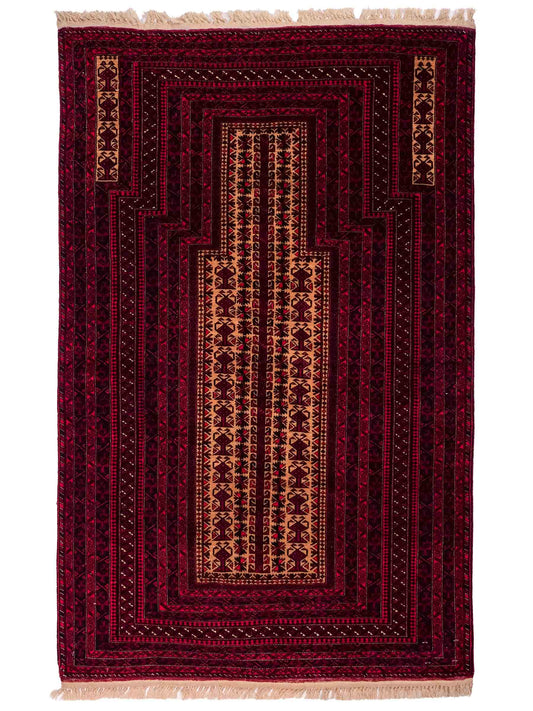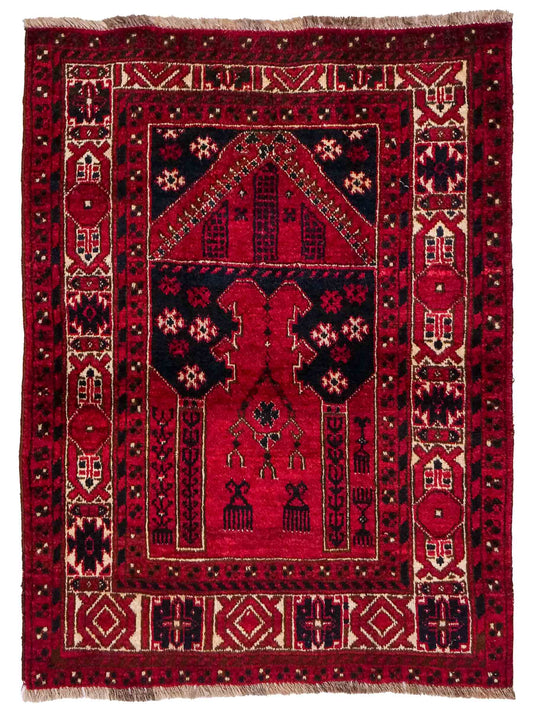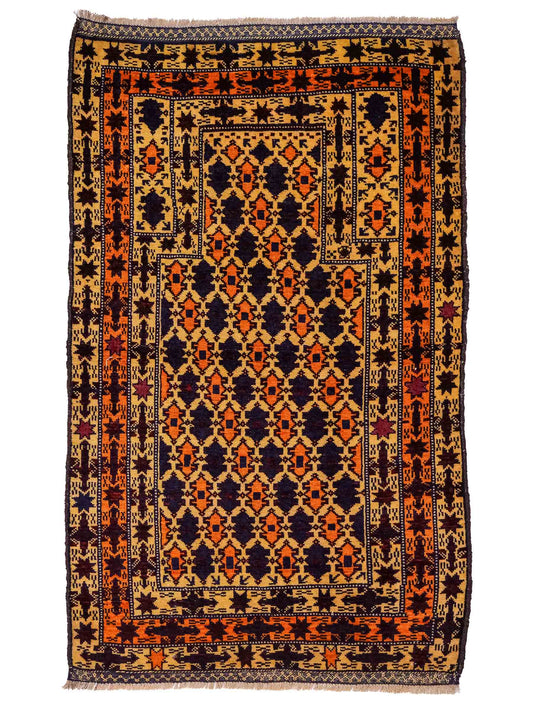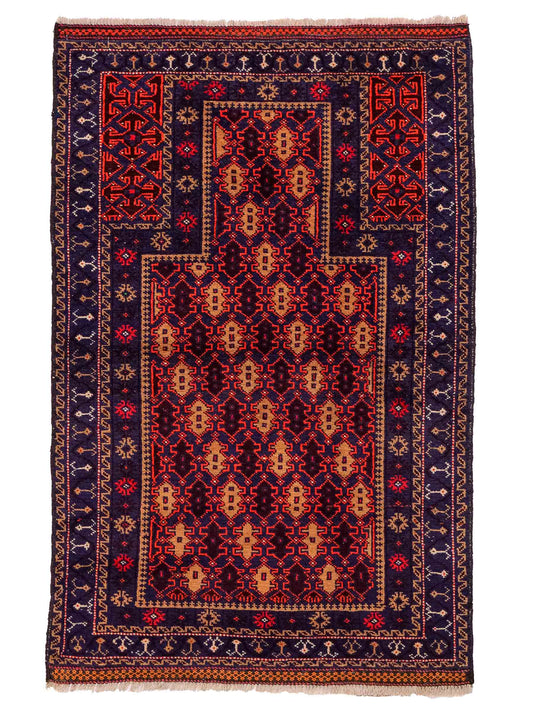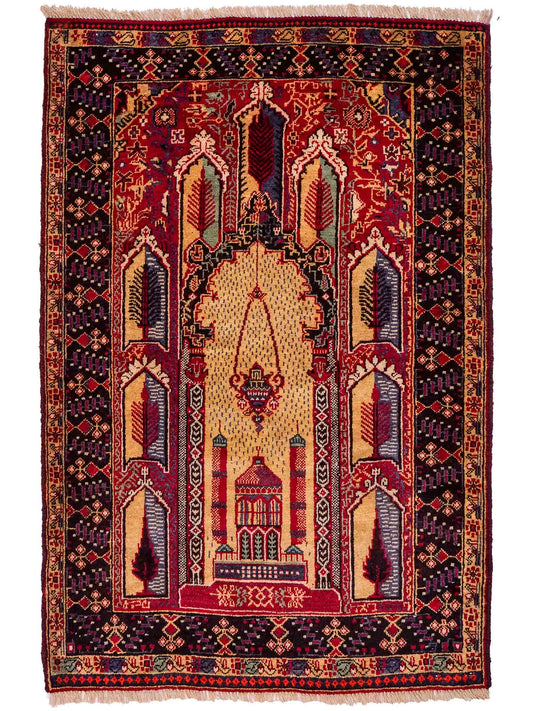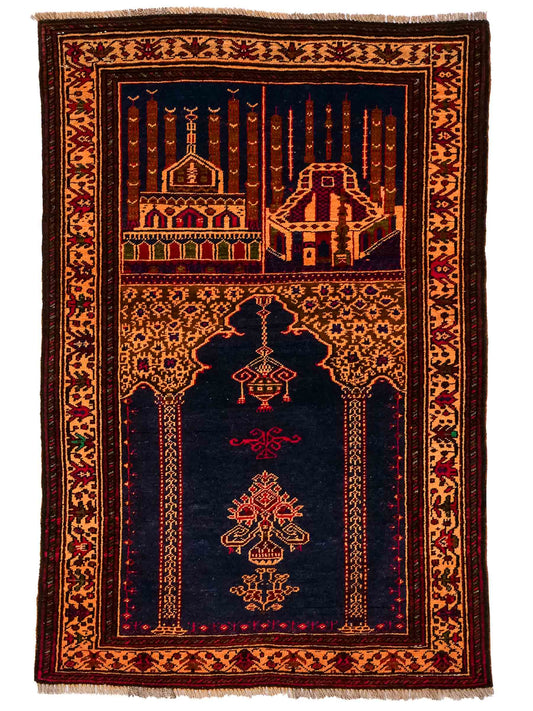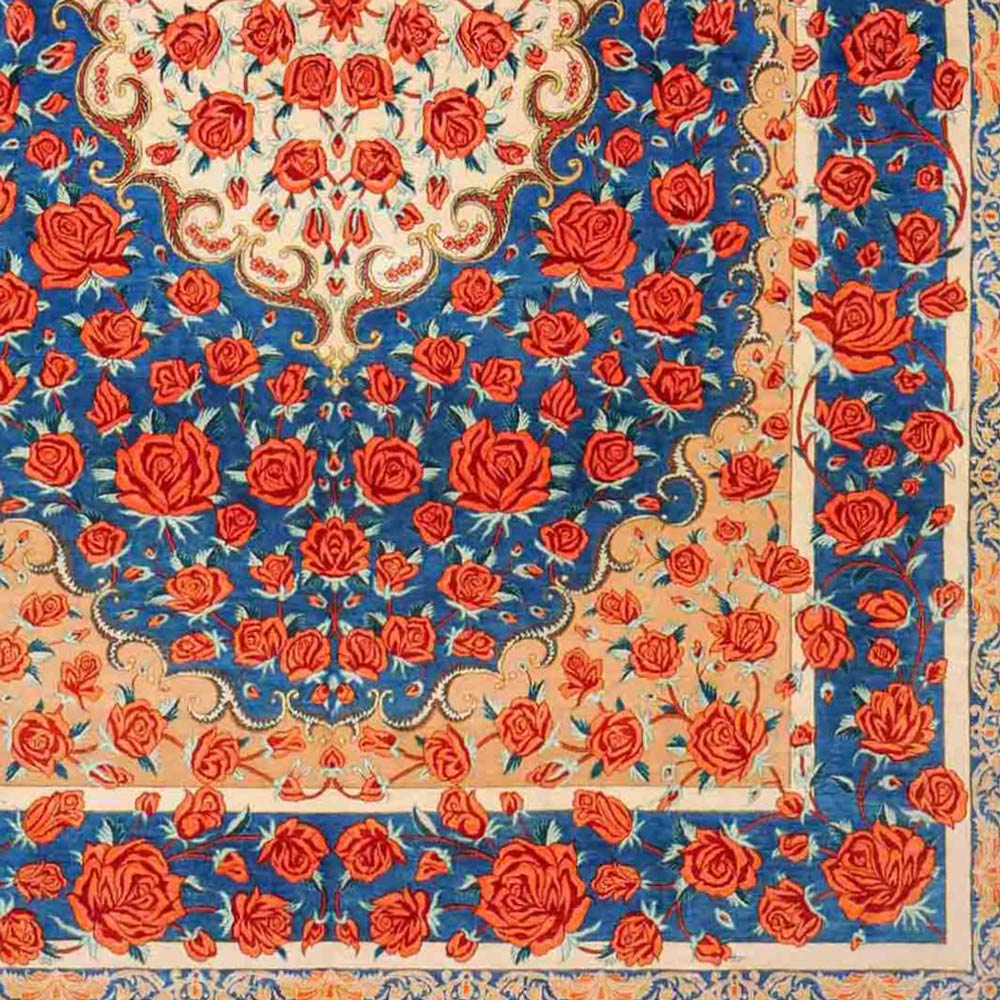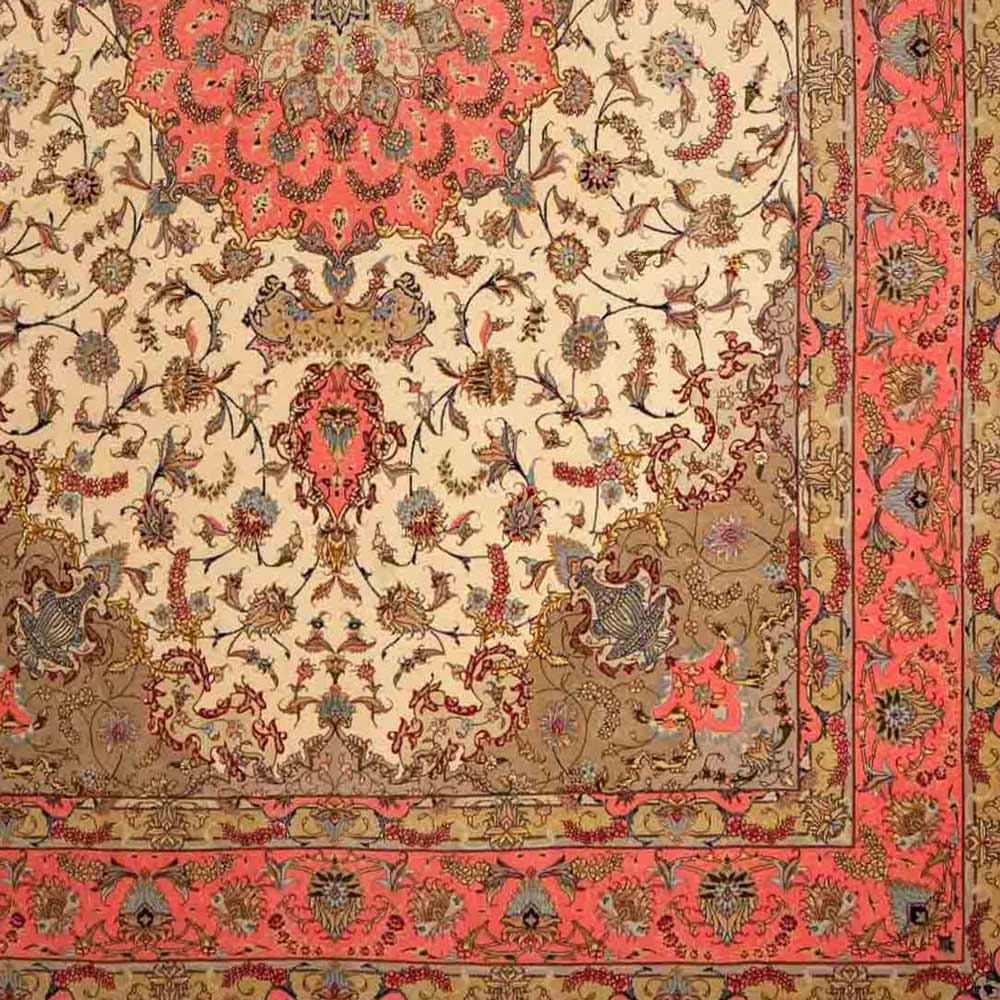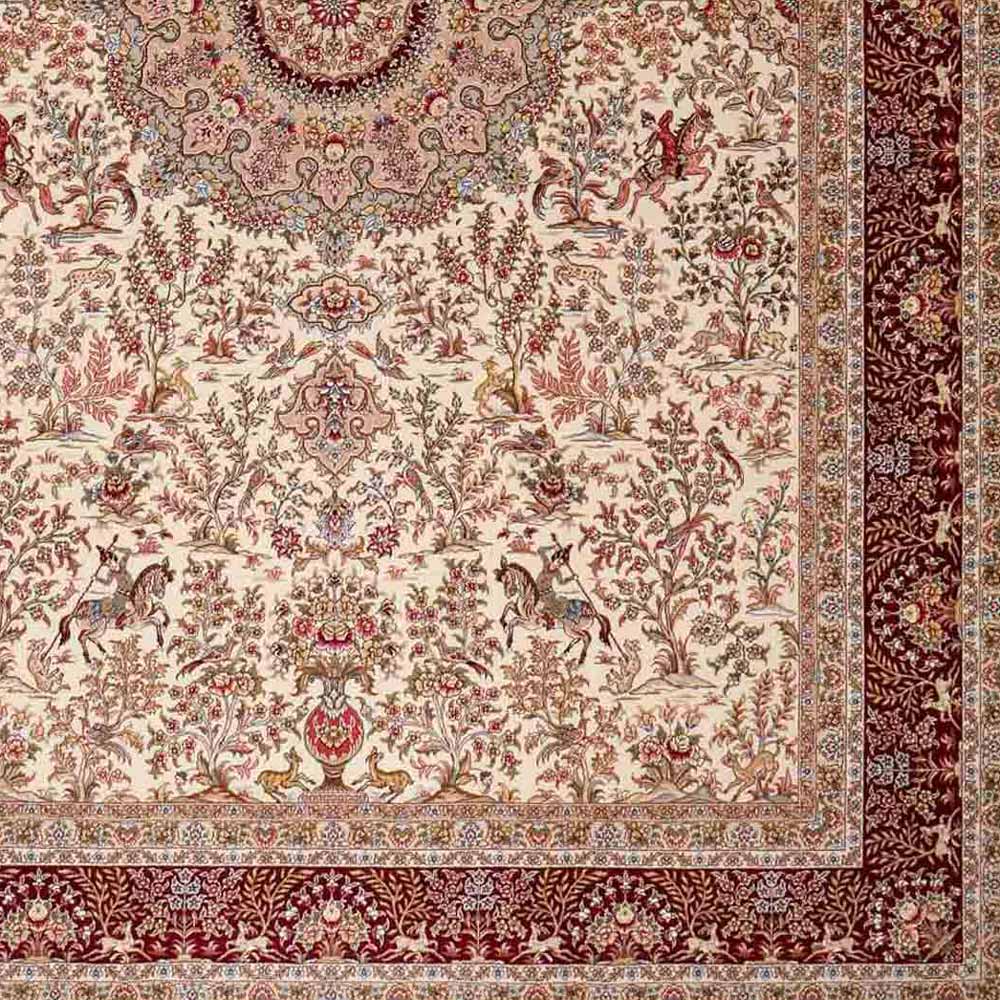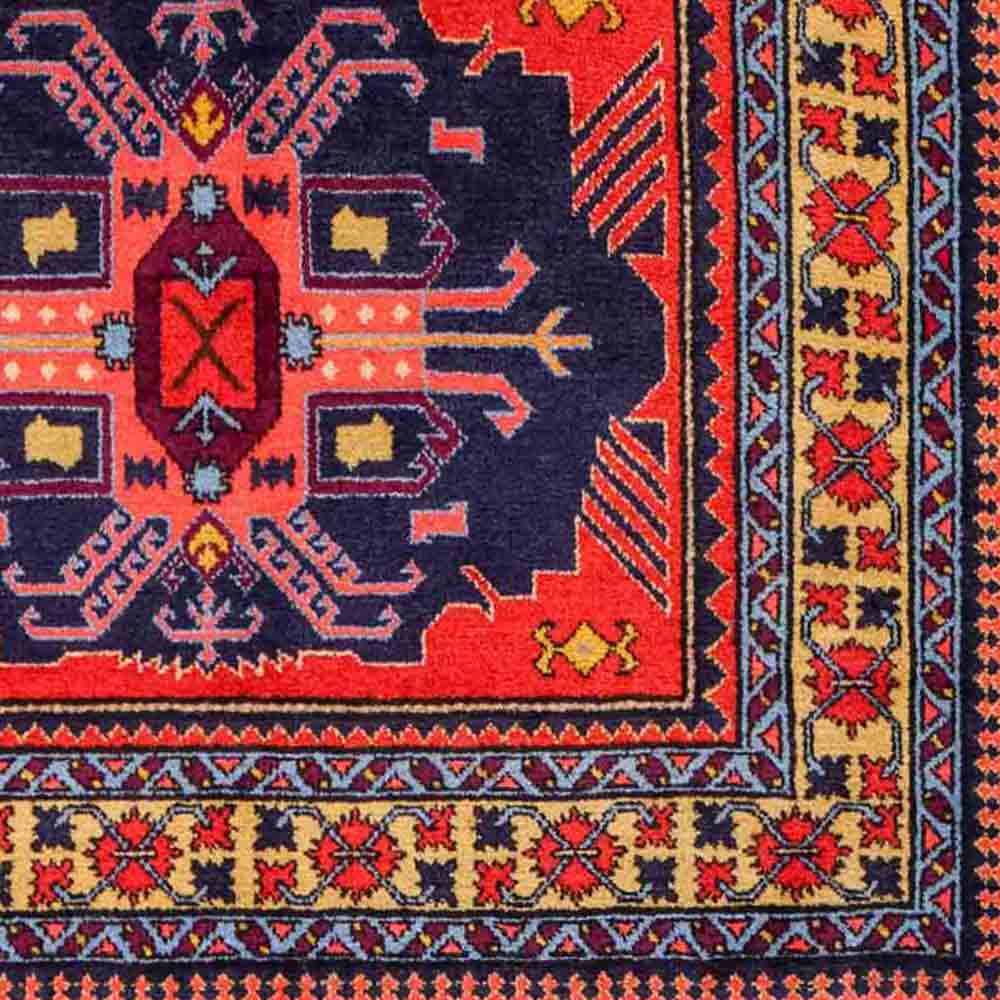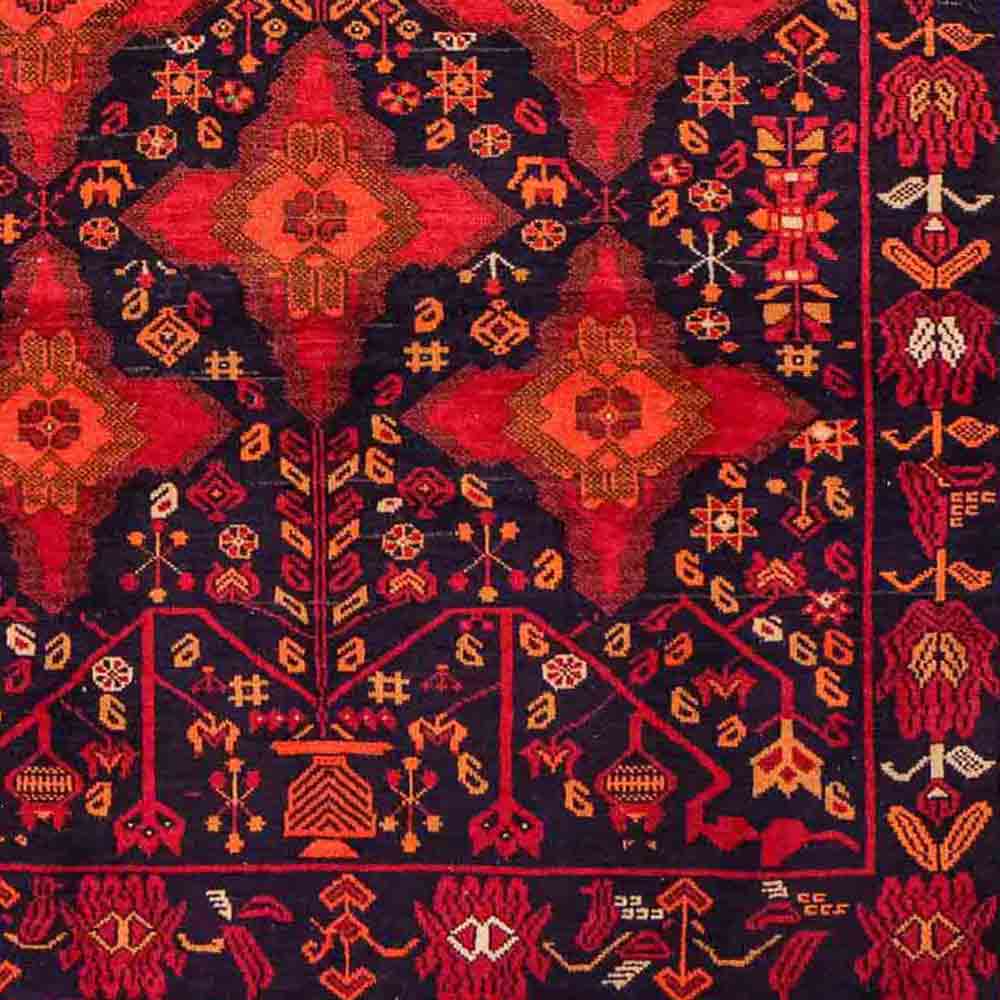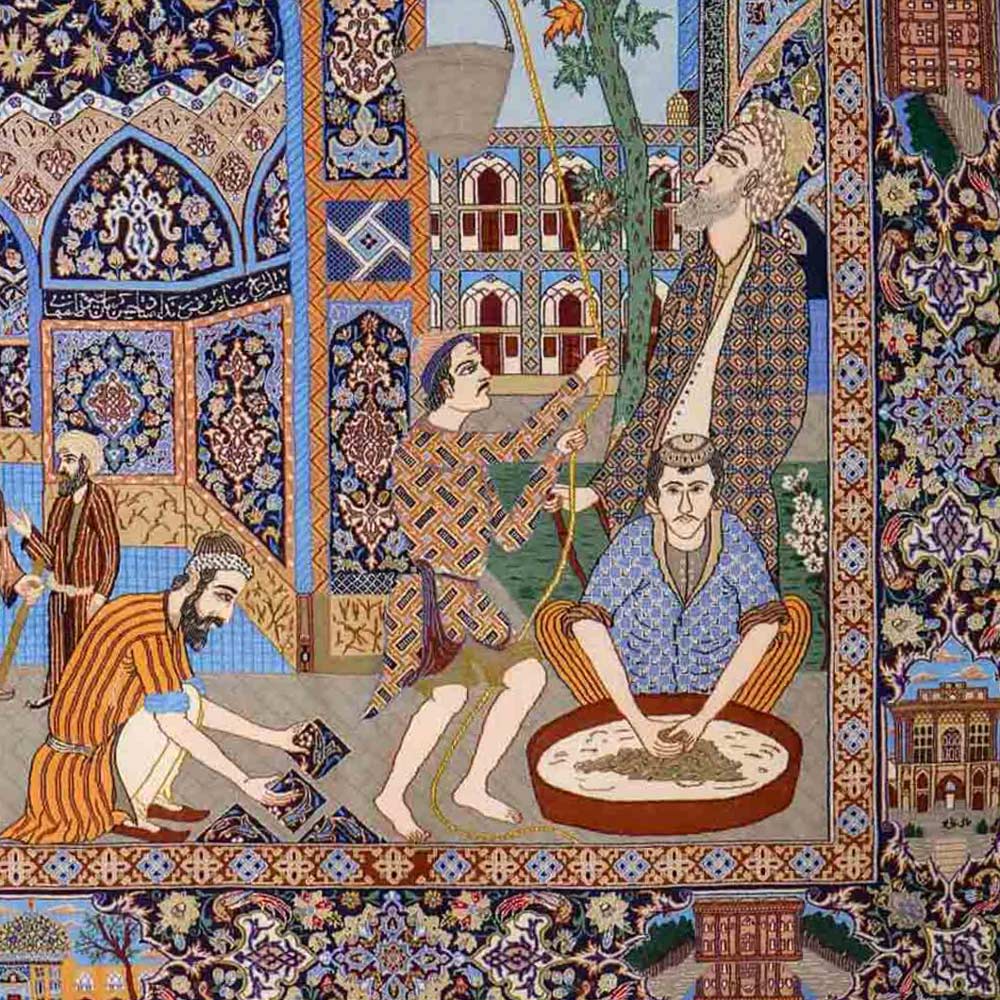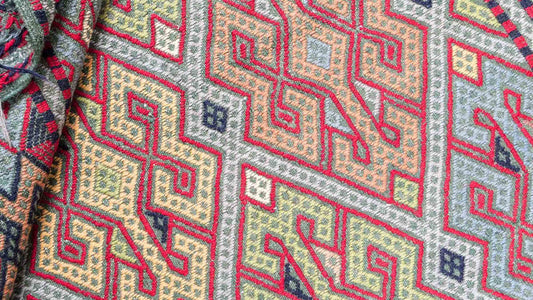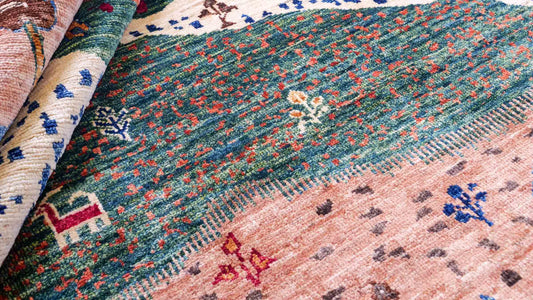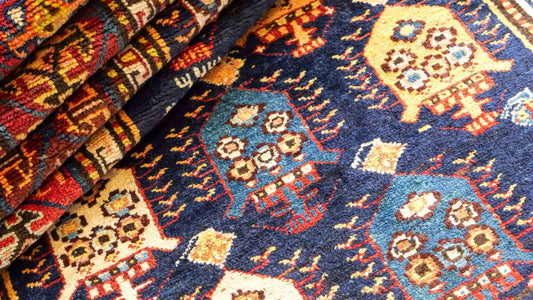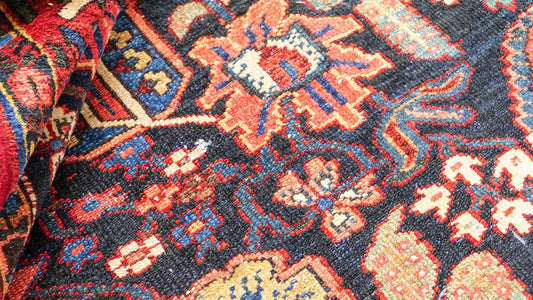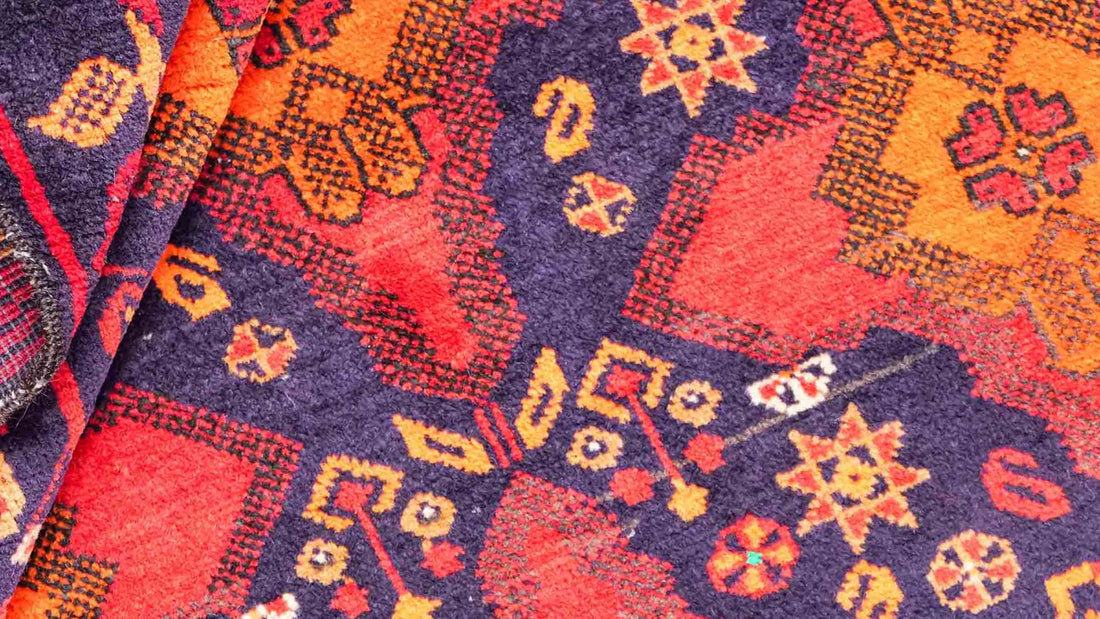
Baluch
Daniel KhademiBaluch rugs rank among the most fascinating and character-rich village and nomadic carpets from Persia. They represent genuine craftsmanship, rustic heritage, and authentic style—perfectly suited to both contemporary and classic interiors. Discover what makes genuine Baluch rugs so special, how they're made, what to look for when buying one, and how a handcrafted original can enrich your home.
Baluch Rugs: Key Facts at a Glance
- Origin: Nomadic and village regions of Baluchistan (Eastern Iran, Afghanistan, Pakistan)
- Material: Pure sheep’s wool, often hand-spun and naturally dyed
- Patterns/Design: Geometric motifs, tribal symbols (e.g., trees of life, animal motifs), abstract elements
- Highlights: Dense & compact structure, robust, each piece a handcrafted one-of-a-kind
- Craftsmanship: 100% handmade, usually traditional Turkish (symmetric) knot, 100,000–200,000 knots/m²
- Value: Authenticity and artistry, sought-after collectibles and sustainable investments
- Care: Easy maintenance and outstanding durability—ideal for newcomers and everyday use
- Interior Style: Rustic, boho-inspired, or minimalist spaces; bold accent in modern home concepts
Explore our curated selection of Baluch Rugs online or request personal advice to find your perfect original!
Origin, History & Cultural Significance of Baluch Rugs
Geographic Influences of the Baluch Region
Baluchistan stretches across eastern Iran and parts of Pakistan and Afghanistan—a rugged, hilly region defined by a dry climate. The area’s natural resources, especially sheep farming, are the basis for the high-quality wool used in Baluch rugs. The use of local materials and vibrant plant-based dyes creates the rugs’ distinctive color palette and rustic appeal.
Regional Variations & Styles
Within Baluchistan, various tribes and villages craft distinct designs and styles. Certain areas are renowned for specific color palettes and weaving patterns, embodying the identity of each community. This diversity means you can often recognize a rug's precise origins by its motifs—a hallmark of true Baluch artistry.
Historical Roots: The Origin of Baluch Rugs
The art of rug-weaving among the Baluch people dates back centuries and is deeply linked with their nomadic lifestyle. Historical records show that weaving has always played a crucial role in Baluch daily life. Baluch rugs stand out for their matte colors and geometric motifs, often bearing spiritual and cultural symbolism passed down through generations.
Symbolism & Cultural Meaning
Patterns and color choices in Baluch rugs hold specific cultural connotations. A deeper exploration reveals that the use of colors such as red or blue is frequently tied to traditional stories and beliefs. These elements provide Baluch rugs with not just aesthetic appeal, but also narrative depth and meaning.
Social & Economic Role: Rugs as Cultural Identity
Baluch rugs are not just feats of craftsmanship—they’re integral to social life in the region. Many families engage in their production, making it an important source of income. Weaving skills are typically handed down from mothers to daughters, keeping the Baluch cultural identity alive with every knot. Each rug is a testament to community pride and heritage.
Design, Motifs & Colors: The Distinct Aesthetics of Baluch Rugs
Baluch rugs are instantly recognizable by their geometric patterns, striking tribal symbols (such as trees of life, amulets, animal motifs), and earthy yet vibrant colors: reds, blues, ochres, and browns. Subtle, matte coloration—achieved using natural dyes from plants and minerals—is typical. No two rugs are alike: Every weaver and every family incorporates their own motifs, stories, and worldview, making each rug a truly individual cultural artifact.
What Makes Baluch Rugs Unique?
- Bold, simple motifs instead of ornate, elaborate patterns
- Authentic craftsmanship: small irregularities are a sign of quality!
- Dense knotting for maximum durability
- Versatility: Use as a traditional rug or a sturdy wall hanging
How It's Made—Step by Step: From Sheep to Work of Art
- Sheep’s Wool: Locally sourced sheep’s wool—hand-spun and untreated
- Dyeing: Natural dyes from plants such as walnut, madder root, and indigo
- Warping: Warp threads of cotton or wool on a traditional loom
- Weaving: Typically Turkish (symmetric) knots, resulting in tight, robust construction
- Design: Plenty of creative freedom—each family integrates traditional, symbolic, and regional designs
- Finishing: Washing, brushing, and hand-finishing of edges and fringes
Tip: Small irregularities in size, pattern, or pile height are hallmarks of genuine handmade craftsmanship—not a flaw!
The Most Popular Village & Nomadic Rugs Compared: Baluch, Hamadan, Turkaman & Gabbeh
| Criteria | Baluch | Hamadan | Turkaman | Gabbeh |
| Origin |
Eastern Iran, Afghanistan, Pakistan (nomadic tribes) |
Western Iran, many villages/regions |
Northern Iran, Turkmenistan, Uzbekistan |
Southwest Iran (Fars, Qashqai, Luri) |
| Material |
Wool pile, often cotton warp |
Wool pile, often cotton warp | Wool pile, often cotton warp | Wool pile, often cotton warp |
| Knot Density |
100,000–200,000 knots/m² | 100,000–300,000 knots/m² | 150,000–300,000 knots/m² | 40,000–100,000 knots/m² |
| Designs | Geometric, tribal, tree of life, prayer rugs |
Geometric, floral, allover, medallion |
"Göl"/floral motifs, diamonds, repeating patterns |
Minimalist, geometric, colored fields, stylized animals |
| Colors |
Earthy, red, blue, brown, ochre |
Bold red, blue, beige, brown |
Deep red, black, ivory, natural |
Bold, earthy, yellow, red, green, blue |
| Character |
Authentic, compact, rustic |
Versatile, practical, affordable |
Distinctive, uniform, highly durable |
Soft, cozy, modern, homey |
| Price/Value | Mid-range |
Entry-level, very popular |
Mid-range | Entry to mid, very popular |
| Highlights |
Handcrafted originals, symbolic meaning |
Huge variety of styles, everyday usability |
Traditional, iconic Göl motif |
Thick, soft, extremely versatile; modern look |
Checklist: How to Identify Authentic Baluch Rugs
- Certificate of authenticity or provenance (from a reputable dealer or direct source) ✔
- Noticeably firm, vibrant wool—no chemical sheen ✔
- Geometric or tribal-inspired designs ✔
- Matte, earthy colors with no neon/artificial shine ✔
- Hand-finished fringes; minor irregularities in patterns/edges ✔
- The back mirrors the front structure ✔
Care & Longevity: Preserving Your Baluch Rug
Keeping Your Baluch Rug Beautiful for Generations:
- Vacuum regularly with gentle settings; do not beat the rug
- Blot spills quickly with lukewarm water and a clean cloth
- Avoid direct sunlight to prevent fading
- Professional cleaning every 1-2 years is highly recommended
- For more detailed advice, visit our blog post: *How to Care for Hand-Knotted Rugs*
Décor Ideas: How to Style Baluch Rugs
- Centerpiece: A statement piece in the living room, hallway, or bedroom
- Mix & Match: Combine several village or nomadic rugs for a unique boho vibe
- Urban & Modern: Perfect for minimalist, loft, or Scandinavian interiors with natural materials like wood, linen, and concrete
- Wall Hanging: Rustic art for your walls
Value & Investment: A Unique Piece for Life
Baluch rugs offer excellent value for money. For a comparatively modest price, you not only receive a hand-knotted original, but also an exceptionally durable quality product that you will enjoy for many years and which will gain character over time. Although they are mostly found in the lower to medium price segment and appreciation in value is not guaranteed, they are appreciated by customers all around the world. In addition, purchasing Baluch rugs supports the local economy of the region and helps to preserve its rich cultural heritage.
► For detailed tips & in-depth guidance, see our blog post: *Are Hand-Knotted Rugs a Good Investment?*
Request a free personal style or purchasing consultation for Baluch rugs today!
FAQ – Frequently Asked Questions about Baluch Rugs
What distinguishes authentic Baluch rugs?
► Genuine, hand-spun wool, striking tribal motifs, matte natural colors, dense knotting, and direct nomadic heritage.
Are Baluch rugs suitable for allergy sufferers?
► Yes—pure natural wool is breathable and usually well tolerated, with no chemicals involved.
Will Baluch rugs appreciate in value?
► Originals with proven provenance and unique designs are always in demand and tend to hold their value. —read more in our guide: *Are Hand-Knotted Rugs a Good Investment?*
How long do Baluch rugs last with normal use?
► Decades! With proper care, they often become treasured family heirlooms. For more detailed advice, visit our blog post: *How to Care for Hand-Knotted Rugs*
Where can I buy authentic Baluch rugs?
► The best sources are specialist dealers or trusted online shops. At JUPITER Intl, every hand-knotted, hand-tufted, and handwoven rug comes with a Certificate of Authenticity.
Summary: The Art & Tradition of Baluch Rugs
Baluch rugs are a unique expression of artistry, tradition, and craftsmanship. They bring beauty, cultural heritage, and true individuality into your home. Investing in a Baluch rug means acquiring a work of art with practical value—cherished and admired across generations.
Request your personal consultation or browse our latest Baluch Rug collection now!
Related blogs & blog posts you might also be interested in:
→ Design Classics, Countries of Origin, Carpet Materials, Carpet Guide

